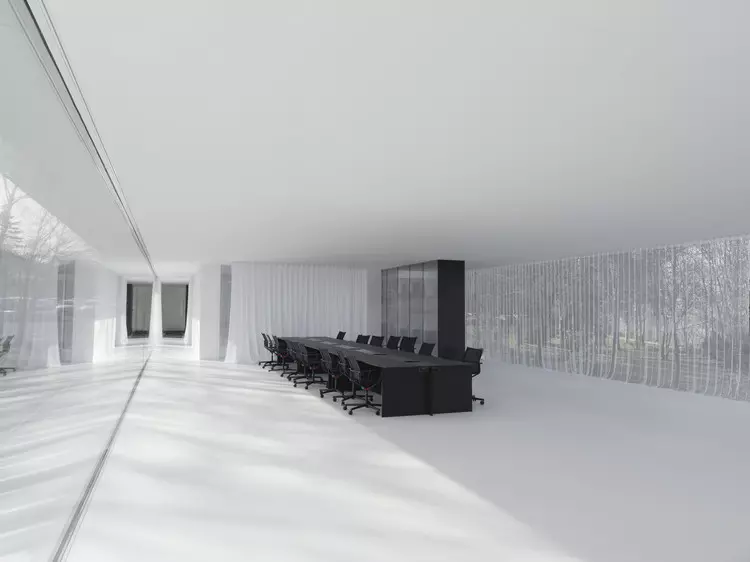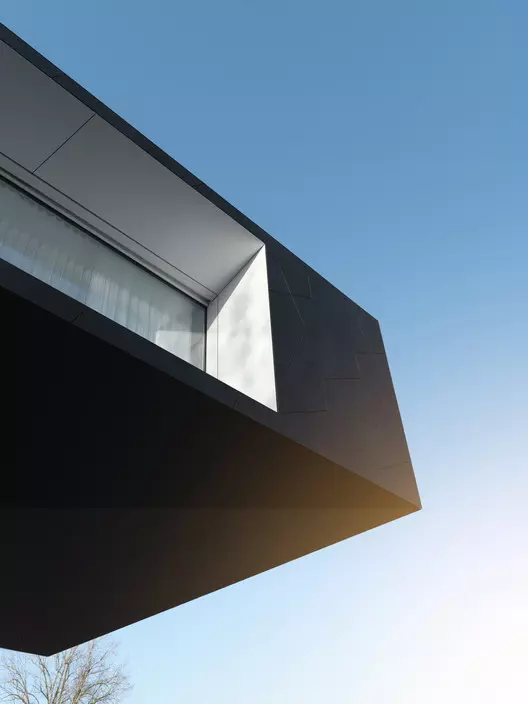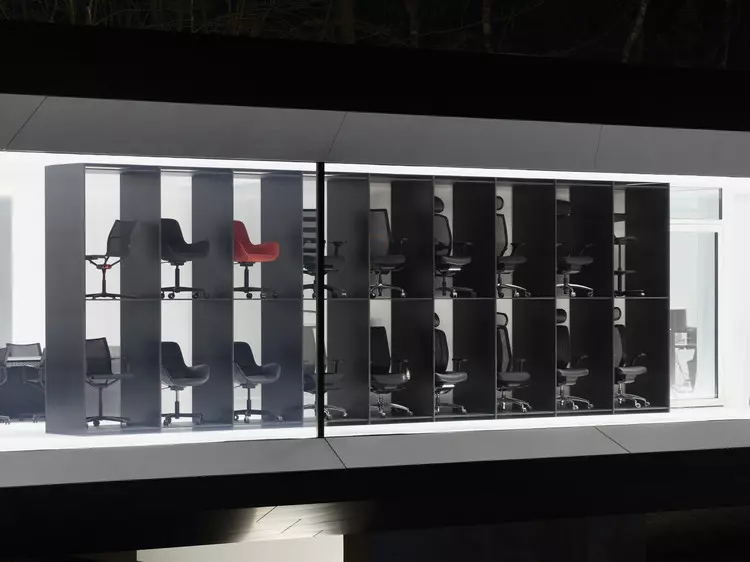 Image: © Gery Kellermann
Image: © Gery Kellermann
As we continue to navigate the ongoing pandemic, the future of offices and workspaces has been widely debated. However, some immediate effects are clear: the rigid, primarily in-office model has been quickly replaced by hybrid work, with adaptability and comfort becoming the top priorities. Therefore, even as long-term consequences might be unclear, businesses will certainly have to strive for the right balance between traditional and remote methods in order to promote efficiency and employee well-being. From a design and architecture perspective, demand will focus on flexible working environments that foster creativity, productivity, and comfort - as well as addressing the associated technological, economic, and sustainability challenges.
With this in mind, renowned chair manufacturer Wagner, together with architects Titus Bernhard and Andreas Weissenbach, developed the Wagner Design Lab in Langenneufnach, southern Germany. Following new work and lifestyle patterns, the space can be used flexibly for anything from a showroom to an office, displaying the company’s brand “Wagner Living” while exploring and redefining the boundaries of the modern workspace.
The floating building and its multiple functions
 Image: © Gery Kellermann
Image: © Gery Kellermann
It all started with an idea: the Wagner family residence, which had been serving as a showroom for the brand, was to be built over with a seemingly seamless and minimalistic rectangular volume. Looking to push design limits, the project consists of a steel superstructure supported on slender beams that allows the volume to float at a lofty height above the original building. Alongside the 160 tons of steel, architects incorporated the world’s largest glass panels; four sheets of triple-insulated sedak glass, each one measuring 3.04 x 19.21 meters, that required unique machinery and high-skilled installation. In this way, the transparent, frameless glass façade acts as a giant display window that features the silhouettes of Wagner chairs and furnishings.
Inside the glass pavilion, the building spreads out over a wide area without using a single supporting pillar, creating an airy look that merges with the views of its natural surroundings. Functioning as a case study for an uncompromising modern office, the interior is shaped as an adaptable, flexible space that can serve a multitude of functions by using an innovative modular system.
From shelves to space dividers: a modular system with endless configurations
 Image: © Gery Kellermann
Image: © Gery Kellermann
To ensure a flexible environment, German designer Stefan Diez created a contemporary office furniture system known as “D2” that structures the open white space of the Design Lab. Based on a construction kit with aluminum profiles, connectors, and honeycomb panels, the elements can be plugged in together and assembled without screws. Besides forming a giant shelf that showcases the models of Wagner Living chairs - among them the D1 family -, the matt-black D2 panels are featured in a nine-meter table (that includes recessed ducts for cable management) and used as dividers to separate the lounge area from the rest of the space.
Therefore, the modular system is a sustainable and lightweight setup that can be easily installed for endless configurations - and hence adapt accordingly to changing environments. Whether it be to create shelves, furniture pieces, or dividers, the system enables Wagner staff from the Marketing, Design, and Interior Design departments to use the Design Lab flexibly as an alternative to working from home and for all kinds of creative work. And in combination with the extensive length of the open-plan room, the clear lines of the D2 system allow for uninterrupted landscape views, enhancing the comforting feel of the space.
Towards flexible workspaces that promote creativity, sustainability and well-being
 Image: © Gery Kellermann
Image: © Gery Kellermann
Without a doubt, the workplace, as we once knew it, is going through a paradigm shift - and architecture and design must be able to address it. In these troubled times, in particular, office environments should accommodate diverse functions in order to fulfill the needs of collaboration and well-being, and at the same time promote greater efficiency, sustainability, and creativity within a workspace. Thus, it is important to continue exploring products and materials, no matter how unconventional they may be, that fit these criteria.
Innovations like the D2 system seem to be taking that first step, but there are many other possibilities to explore. In fact, in the near future, Wagner will offer a configurator that will make it possible to design a D2 furniture system digitally, meeting clients’ specific requests and opening the door to more sustainable, reusable materials. In this way, as we look into the future of the workspace, the focus should be on redefining boundaries, implementing new technologies, and prioritizing flexibility over rigid, traditional models - only this way can we aim towards healthier and better working environments.
For more information on innovative furniture concepts for the modern workspace, visit this link.












